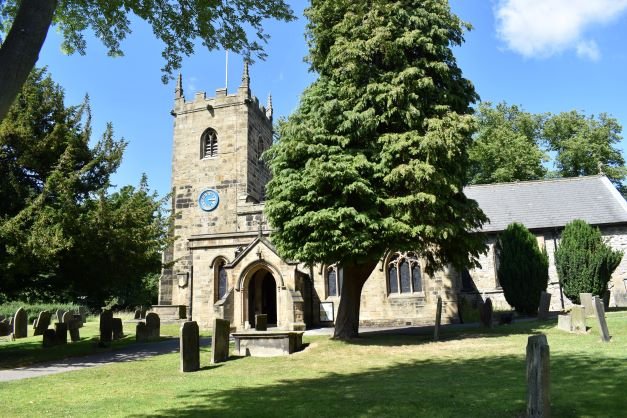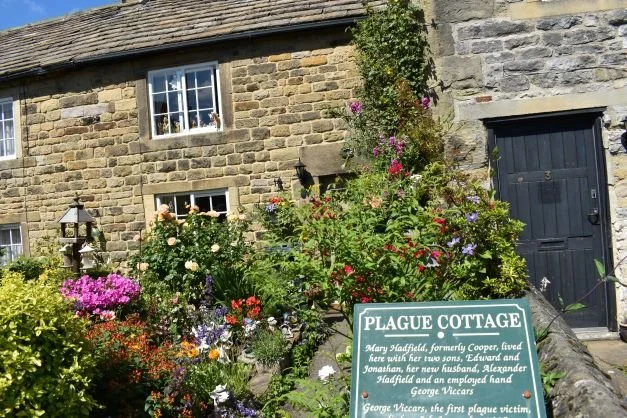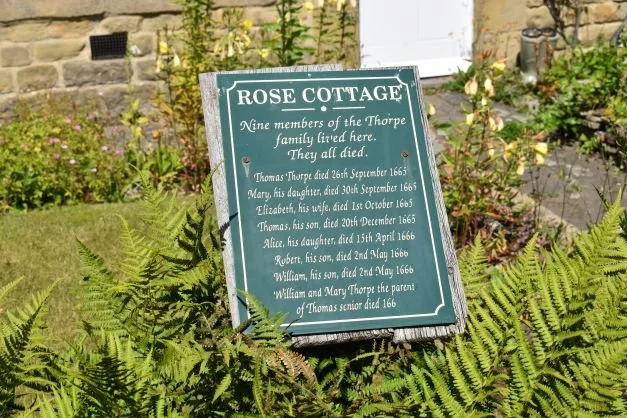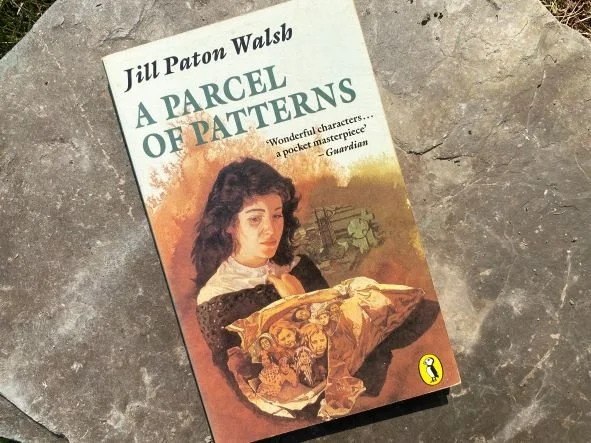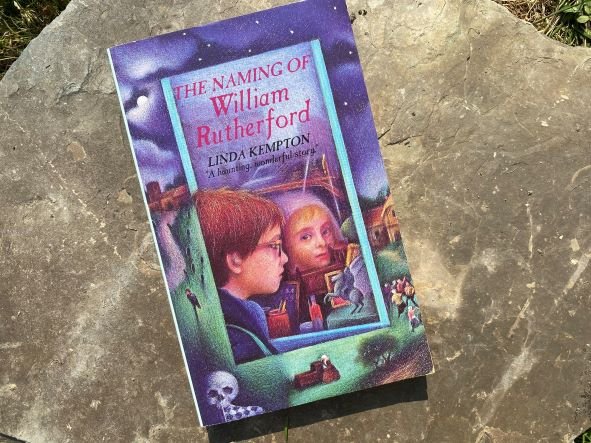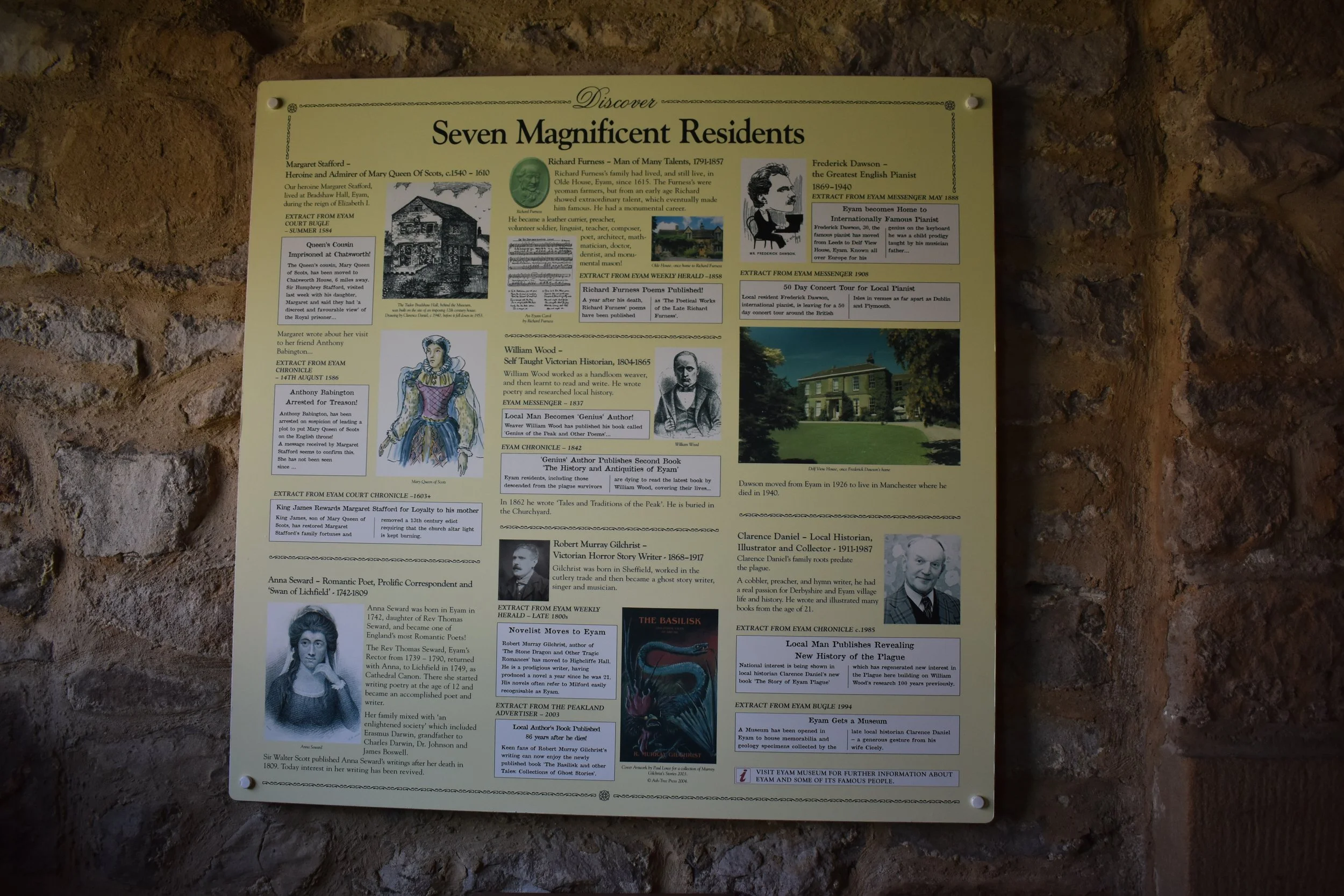Eyam
Eyam is a beautiful village in the Peak District National Park in Derbyshire. It became famous after the Black Death of 1665/66 and is now a popular tourist destination.
The plague arrived in Eyam in late August 1665. It came in a parcel of cloth sent from London to the village tailor, Alexander Hadfield. When his assistant, George Viccars, spread the cloth out by the fire to air, he found it was infested with rat fleas. He died a few days later with his burial being recorded in the parish registers on the 7th September 1665.
The people of Eyam decided to act decisively and prevent the spread of disease by deciding to isolate themselves from the surrounding communities. Under the leadership of the rector, Rev. William Mompesson and his predecessor, the Rev. Thomas Stanley, they agreed firstly to bury their own dead close to their homes rather than in the church yard and secondly, to worship in the open air.
Whilst undoubtedly saving the lives of many in the surrounding area, the villagers paid a high price. Percentage wise they suffered a higher death toll than that of London as 260 Eyam residents died over the 14 months of the plague out of a population of 800. Some families such as the Thorpes were wiped out completely.
This incredible story has been the inspiration for a number of children’s books and offer excellent historical fiction to broaden knowledge and interest beyond the boundaries of the current National Curriculum.
‘A parcel of patterns brought the plague to Eyam. A parcel sent up from London to George Vicars, a journeyman tailor, who was lodging with Mrs. Cooper in a cottage by the west end of the churchyard.’ So begins Jill Paton Walsh’s classic ‘A Parcel of Patterns’. Written from the viewpoint of Mall Percival, one of the villagers, the novel chronicles the fatal events which saw the villagers separated from the rest of the world- including Mal’s love, Thomas Torre,- and so many lose their lives. It is a beautifully written, deeply poignant and powerful piece of writing which has stood the test of time. Re-released in March 2022 (Random House ISBN: 9781473594722), the story might now take on a new significance for many in the light of the Covid pandemic, but above all, it offers an excellent introduction to the time of the plague and how it affected Stuart England beyond London! Sadly, Jill Paton Walsh died in 2020.
Berlie Doherty lives in Derbyshire. Her story, ‘Children of Winter’ (1985) is a time-slip adventure, set in Eyam and although the events are made up, it is rooted in events of the past. According to her website, Berlie had the idea for the story whilst visiting Bowsen Barn, near High Bradfield, with a group of school children and writing ghost stories. One of the children suggested that someone living there might be sheltering from the plague and she (Berlie) knew she was going to write a story about this. ‘Children of Winter’ was made into a television series by Channel 4. (Catnip Publishing 2007 ISBN: 978-1846470264)
‘The Naming of William Rutherford’ (ISBN: 978-1905512447 - but I think it’s out of print) is also a time-slip story, linking Jack to the people of Eyam in 1665. Disturbed by vivid dreams, Jack is stunned to see the very crib from his nightmares in an antique shop. The date 1664 is etched along the top and Jack is sure it has a message for him. His intuition is correct as the cradle forms a link to the past. Originally published in 1992, it remains a gripping story if slightly dated in some of the ‘modern’ life sections.
‘The Kiss of Death’ (Usborne 2006 ISBN: 978-0746070642) by Malcolm Rose follows Seth as he goes on a school trip to Eyam. He is moved by the events of the past, but his class mates, Kim and Wes, steal coins from the wishing well with hideous consequences. My son loved Malcolm Rose’s books when he was younger and this was a particular favourite. I’m afraid I can’t find it at the moment which is why I have no photo to offer.
Eyam is fascinating to visit as well as being a very beautiful place. The village is obviously proud of its history and the small museum is excellent and well worth a visit. There are plenty of signs around the village, highlighting the key locations connected to events at the time and the church has documents on display naming those who died in the plague. The village was also home to a number of famous residents!
